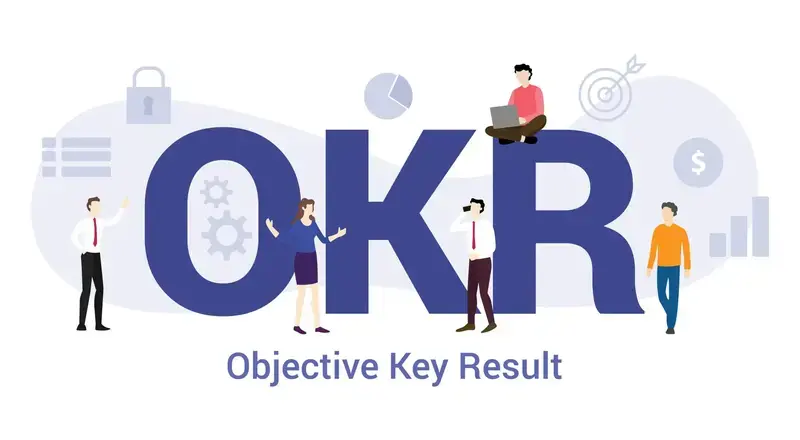A Comprehensive Guide to Grading OKRs: Best Practices and Tools with AntOKR
Discover effective methods for grading OKRs using AntOKR, a comprehensive OKR management tool. Learn about grading importance, customization options, and the significance of transparency in performance measurement.

Understanding the Importance of Grading OKRs
Grading objectives and key results (OKRs) is a pivotal aspect of the OKR framework, acting as a precursor to the end-of-quarter reflections that many organizations conduct. This process establishes a shared language for evaluating performance through OKR software tools, facilitating conversations that drive goal achievement and enhance team performance.
When discussing individual performances in a meeting, how can everyone be assessed fairly? Grading allows a common understanding, making it easier to communicate progress. For instance, when someone states they achieved a score of 0.9 (90%) while another claims 0.6, the grading system provides a clear benchmark for comparison across all contributors.
OKR grades essentially condense a quarter's performance into a single numeric value. Understanding how to grade OKRs is critical to promoting accountability and transparency in your OKR management.

How to Effectively Grade OKRs
Grading OKRs can be approached in several ways, including:
- Percentage of Achievement: This method is straightforward and relies on a simple completion percentage of each key result, making it ideal for organizations just learning how to implement OKRs.
- Bucketed Areas of Achievement: This method categorizes results into specific achievement buckets, which can be particularly useful for OKR examples for software teams.
Customizing Your Grading System in AntOKR
At AntOKR, we provide a customizable grading feature within our OKR management tool that lets you define how your OKR grades are displayed. Consider an objective focused on improving customer service with three key results. Using AntOKR's grading feature, you can assess completion based solely on a percentage.
The following scoring ranges in AntOKR are widely acknowledged:
- 0% to 30%: Failed to make significant progress
- 30% to 70%: Progress made, but fell short
- 70% to 100%: Achieved as planned
Icons in AntOKR provide real-time scoring feedback. The system calculates actual OKR performance based on real-time metrics, accommodating additional methods with custom key result scoring, ideal whether you're exploring OKR software free or premium versions.
Types of Scoring Scales in AntOKR
AntOKR offers four different base scales to score key results:
- 1 → scale of 0 to 1
- 5 → scale of 0 to 5
- 10 → scale of 0 to 10
- 100 → scale of 0 to 100
Choosing the base scale of 1, widely preferred, allows further definition through buckets. Industry categorization typically involves:
- Business as Usual: Generally defined at or above 0.3
- Difficult but Attainable: Generally defined at 0.7
- Extremely Ambitious: Defined at 1.0
Organizations can redefine these levels to align with their own goals, vital when implementing OKR examples for marketing teams.
Examples of Custom Buckets in Action
Each organization has unique needs. For instance, defining business as usual at 0.7 and extremely ambitious at 1.0 encourages exciting discussions, with aggregated scores representing collective progress. These methods are among the best practices for OKR implementation that maintain clarity and focus.
Transparency in Grading OKRs
An essential principle of the OKR methodology is transparency. Grades and scores should be accessible at all organizational levels, from corporate OKRs to individual OKRs. AntOKR promotes transparency, beneficial when understanding how to implement OKRs in a small business.
Leveraging OKR Software Tools for Enhanced Grading
Using OKR software tools like AntOKR simplifies the grading process, offering:
- Automated Calculations: Real-time score computation
- Visual Dashboards: Graphical achievement representation
- Historical Tracking: Performance comparison over time
- Integration Capabilities: Comprehensive data analysis
Goal setting software supports performance improvement by focusing on key objectives and outcomes.
Best Practices for OKR Grading
To maximize the effectiveness of your OKR grading, consider these best practices:
- Maintain Consistency: Use the same criteria across departments
- Schedule Regular Reviews: Conduct frequent check-ins
- Encourage Self-Assessment: Invite self-grading for reflection
- Focus on Learning: Treat grades as learning opportunities
- Adjust Expectations: Modify your grading approach as needed
These practices foster continuous improvement, a core aspect of successful OKR management.
Conclusion: Embrace Grading in Your OKR Process
Implementing a robust grading system for your OKRs fosters accountability and transparency. By effectively utilizing AntOKR's features, you enhance alignment and performance across teams.
Fine-tuning your grading system helps clarify performance standards, promoting productive discussions about goal attainment. AntOKR offers tools to maximize your OKR program, leading to improved outcomes and growth.
If you're eager to optimize your OKR management with a focus on transparency and flexibility, explore how AntOKR can elevate your organizational performance. Customize your OKR grading with real-time tracking and reporting to foster a culture of success.
For a user-friendly OKR management solution, explore AntOKR.
Related Posts

Comprehensive Guide to Finance OKR Examples: Setting Goals for Financial Success with OKR Software
Discover effective finance OKR examples to set measurable financial objectives and key results. Learn how to implement OKRs in finance teams using the right OKR software tools for improved performance.

Maximize Organizational Success with Effective Implementation of OKR Software Tools
Discover how OKR software can enhance goal setting and drive success. Learn best practices for implementation and how AntOKR can facilitate OKR management.

Top 10 Effective IT OKR Examples to Drive Success in Your Organization with OKR Software
Discover 10 effective IT OKR examples that can help enhance alignment, measurement, and engagement within your tech teams. Learn how AntOKR and OKR software tools can streamline your OKR management for better success.